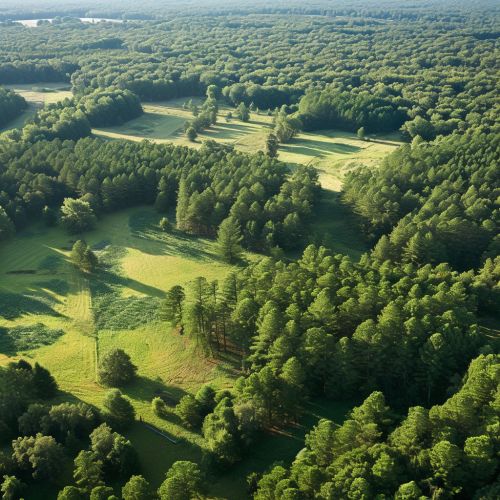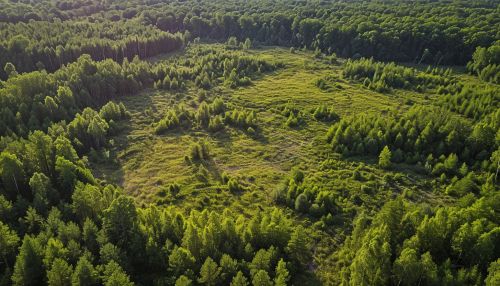Habitat fragmentation
Introduction
Habitat fragmentation, a form of habitat alteration, is a process by which large, continuous habitats are divided into smaller, isolated patches. This process is primarily driven by human activities such as urbanization, agriculture, and logging, leading to a loss of biodiversity and disruption of ecosystem processes.


Causes of Habitat Fragmentation
Habitat fragmentation is predominantly caused by anthropogenic activities. These include:
- Urbanization: The expansion of cities and towns into natural habitats leads to the division of these areas into smaller, isolated patches. Roads, buildings, and other infrastructures create physical barriers that prevent species from moving between habitat patches.
- Agriculture: The conversion of natural habitats for agricultural purposes, such as crop cultivation and livestock grazing, also contributes to habitat fragmentation. This process often involves the clearing of vegetation, which divides habitats into smaller patches.
- Logging: The practice of logging, particularly clear-cutting, can result in habitat fragmentation. This is especially prevalent in forest ecosystems, where large areas of trees are removed, leaving behind isolated patches of forest.
- Mining: Extraction of minerals and other resources can lead to habitat fragmentation. Mining activities often involve the removal of large amounts of soil and vegetation, which can divide habitats into smaller, isolated patches.
Effects of Habitat Fragmentation
Habitat fragmentation has numerous effects on biodiversity and ecosystem processes. These include:
- Loss of Biodiversity: Habitat fragmentation can lead to a loss of biodiversity as species that require large, continuous habitats may not be able to survive in smaller, isolated patches. This can lead to local extinctions and a reduction in species richness.
- Edge Effects: The creation of habitat edges can alter environmental conditions, such as light levels, temperature, and humidity. These changes can affect the distribution and abundance of species within habitat patches.
- Increased Isolation: Habitat fragmentation can increase the isolation of species, which can limit gene flow and lead to inbreeding. This can reduce genetic diversity and increase the risk of local extinctions.
- Disruption of Ecosystem Processes: Habitat fragmentation can disrupt ecosystem processes, such as nutrient cycling and predation. This can alter the structure and function of ecosystems, leading to a loss of ecosystem services.
Mitigation Strategies
Several strategies can be implemented to mitigate the effects of habitat fragmentation. These include:
- Habitat Restoration: This involves the restoration of degraded habitats to their original state. This can increase the size of habitat patches and reduce the effects of fragmentation.
- Corridor Creation: Corridors, such as strips of vegetation, can be created to connect isolated habitat patches. This can facilitate movement and gene flow between patches, reducing the effects of fragmentation.
- Land Use Planning: This involves the careful planning of land use to minimize habitat fragmentation. This can include zoning regulations and the establishment of protected areas.
- Sustainable Practices: The adoption of sustainable practices, such as sustainable agriculture and forestry, can reduce the impact of these activities on habitats.
Conclusion
Habitat fragmentation is a major threat to biodiversity and ecosystem processes. However, through careful planning and the adoption of sustainable practices, it is possible to mitigate the effects of this process and conserve our natural habitats for future generations.
